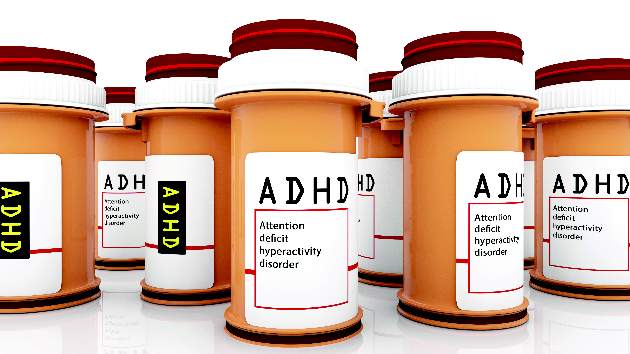FROM HORMONE AND METABOLIC RESEARCH
Pediatric patients diagnosed with pheochromocytomas (PHEO) or paragangliomas (PGL) were nearly three times as likely to also carry a diagnosis of attention deficit hyperactivity disorder (ADHD), compared to pediatric patients without PHEO or PGL, investigators reported.
In addition, in 33% of the patients with PHEO and PGL, ADHD symptoms were resolved following surgical removal of the tumor.
PHEO and PGL are rare tumors of the adrenal gland. About 10% of PHEO and PGL cases occur in patients younger than 18 years. PHEOs form inside the adrenal gland in the adrenal medulla while PGLs form outside the adrenal gland. Both tumors cause excess secretion of epinephrine and norepinephrine resulting in high blood pressure, headaches, weight loss, excess sweating, anxiety, and depression. These tumors are most often surgically removed or treated with medication. Chemotherapy and radiation therapy have not been as effective in treating PHEO or PGL.
ADHD is a neurodevelopment disorder characterized by a pattern of inattention and hyperactivity or impulsivity. ADHD is associated with catecholamine dysregulation; the function of catecholamine receptors is impaired by either excess or deficient stimulation. ADHD has a prevalence of 7.2% in children aged 4-18.
In addition to the overlap in symptoms, “the stimulants used to treat ADHD may exacerbate the symptoms of the PHEO/PGL and potentially lead to a hypertensive crisis … Amphetamines, the most widely used ADHD medication class, lead to release of stored catecholamines from vesicles, block reuptake of norepinephrine and dopamine, and block catecholamine degradation,” wrote Dr. M. Batsis of the Eunice Kennedy Shriver National Institute of Child Health and Human Development and her associates (Horm Metab Res. 2016 May 12. doi: 10.1055/s-0042-106725 ).
“I noticed that a lot of patients with the same story as follows: [parents] went to their pediatrician when their child started having feelings of anxiety or their heart was racing. And these symptoms were attributed to ADHD, and the child was started on medications. It wasn’t until later symptoms – an abdominal mass or a hypertensive crisis – that the patient was ultimately found out to have a pheochromocytoma,” Dr. Maya Lodish, a pediatric endocrinologist and coauthor of the paper, said in an interview.
“In hindsight, it just was not picked up. ADHD medications in no way affect tumor growth. The substances that these tumors release are stimulants. Endocrine tumors release catecholamine which are naturally occurring hormones we release under stress. When you add on top of that a stimulant medication [to treat ADHD] that may causes the nervous system to go into overdrive,” she said.
Due to the rarity of PHEO and PGL, their association with ADHD has not been well characterized. The purpose of this study was to therefore better assess the relationship between ADHD and PHEO/PGL development.
Investigators recruited 43 pediatric patients aged 6-17 who had been diagnosed with PHEO or PGL. Twenty-one percent (n = 9) of patients with PHEO/PGL carried a diagnosis of ADHD, compared to 7.2% in the general population (P = .0328).
Prior to the surgical removal of the tumors, eight of the nine patients had elevated levels of norepinephrine (n = 7), dopamine (n = 3), epinephrine (n = 1), metanephrine (n = 5) and/or normetanephrine (n = 7). In the remaining patient, levels were not measured.
Following the surgical removal of the tumors, three of the nine patients experienced both a resolution of their ADHD-related symptoms and a drop or normalization of their catecholamine and metanephrine levels. Two of those three patients showed no clinical signs of recurrent tumors while the third is under evaluation for a small pelvic lesion.
“These tumors are very rare and the vast majority of patients with ADHD are not affected by them, but they do occur. There are other organic conditions with the same symptoms – drug abuse, medications, Graves disease. If the child has symptoms attributed to ADHD and high blood pressure or family history of endocrine tumors then it is important to have a full organic workup to measure other causes of hypertension prior to starting stimulant medication,” Dr. Lodish said.
“My observation is that, and a lot of articles out there would agree, diagnoses of ADHD are on the rise and the prescribing of ADHD medication is also on the rise. I hope this is a bit of a wake-up call to practitioners that what’s common is common but there are some rare [conditions] to be aware of and so don’t have a knee jerk reaction to prescribing a medication for symptoms believed to be attributed to ADHD,” she said.
The Division of Intramural Research at the Eunice Kennedy Shriver National Institute of Child Health and Human Development supported the study. The investigators had no disclosures to report.
On Twitter @JessCraig_OP





